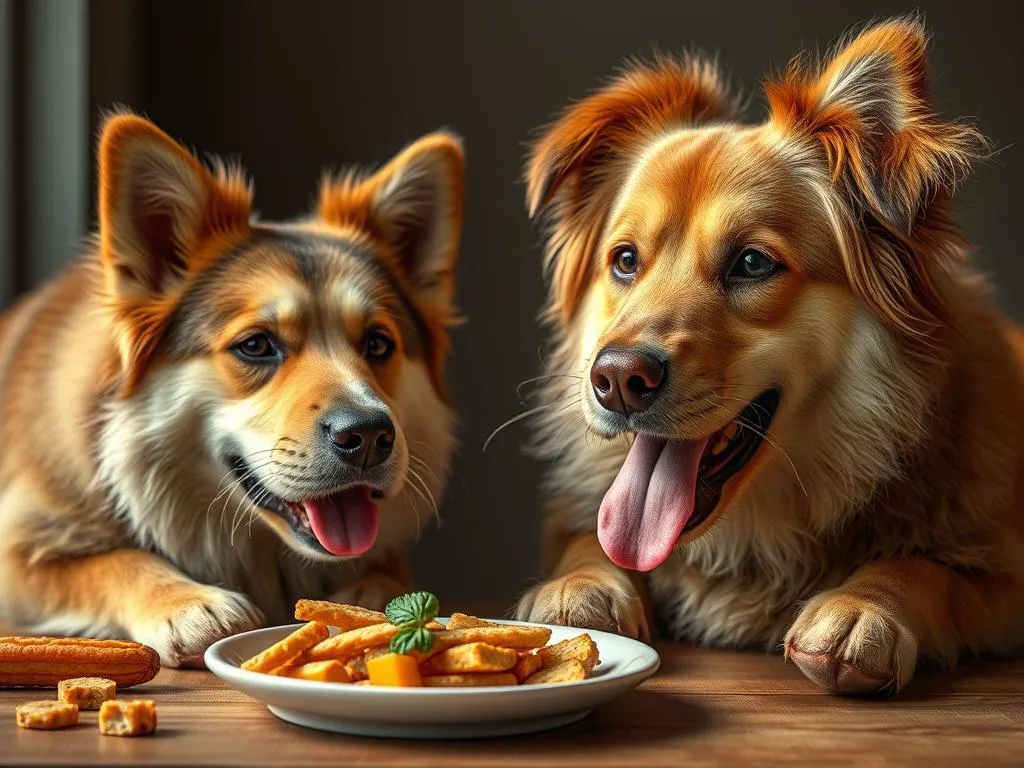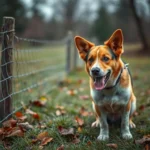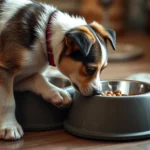
Introduction
Have you noticed your furry friend getting bored or restless at home? You’re not alone. Many pet owners are increasingly turning to food puzzles for dogs as a solution to engage their pets and promote mental stimulation. These innovative toys are not just about keeping your dog entertained; they play a crucial role in your dog’s overall health and well-being.
Mental stimulation is essential for dogs, just as it is for humans. Engaging their minds can lead to improved behavior, reduced anxiety, and a happier life. This article will dive into the world of food puzzles, exploring their benefits, various types, and how to select the perfect one for your pooch.
What Are Food Puzzles for Dogs?
Food puzzles are interactive toys designed to challenge your dog’s problem-solving skills while rewarding them with treats or food. They come in various shapes and sizes, encouraging dogs to think critically and use their natural instincts to uncover their rewards.
Types of Food Puzzles
-
Treat-dispensing toys: These are often more complex, allowing dogs to manipulate the toy to release treats. They typically require rolling, shaking, or nudging.
-
Interactive feeding mats: These mats often have pockets and crevices for hiding kibble or treats, encouraging dogs to sniff and forage.
-
Puzzle bowls: These bowls are designed with varying depths and obstacles, making it more challenging for dogs to access their food.
-
Snuffle mats: Made of fabric strips sewn onto a mat, snuffle mats allow dogs to forage for hidden treats, tapping into their natural hunting instincts.
Materials Used
The safety of your dog is paramount, so it’s important to consider the materials used in food puzzles. Common materials include plastic, rubber, and fabric. Always opt for non-toxic options that are durable and easy to clean to ensure your dog’s safety.
Benefits of Food Puzzles for Dogs
Engaging your dog with food puzzles offers a host of benefits that can significantly improve their quality of life.
Mental Stimulation
Food puzzles for dogs challenge their cognitive skills, promoting brain health and preventing boredom. The problem-solving aspect encourages them to think critically, keeping their minds sharp.
Physical Exercise
While primarily mental exercises, food puzzles can also encourage physical movement. Dogs may need to nudge, roll, or dig through toys, helping them burn off excess energy in a fun way.
Slowing Down Eating
Many dogs tend to gulp down their meals too quickly, which can lead to health issues like bloating. Food puzzles can help slow down their eating, allowing digestion to occur more smoothly.
Reducing Boredom and Anxiety
High-energy breeds often require more stimulation than others. Food puzzles for dogs can alleviate boredom, reducing destructive behaviors and anxiety that arise from having too much pent-up energy.
Strengthening the Human-Dog Bond
Playing with food puzzles can enhance the relationship between a dog and its owner. Engaging in puzzle activities together can lead to shared experiences and a deeper bond.
Choosing the Right Food Puzzle for Your Dog
Selecting the perfect food puzzle for your dog can feel overwhelming, but it doesn’t have to be. Here are some essential factors to consider.
Assessing Your Dog’s Needs
-
Age, size, and breed considerations: Young puppies may require simpler puzzles, while older dogs might enjoy more complex challenges. Consider your dog’s size to ensure the puzzle is appropriate.
-
Activity level and dietary habits: Highly active dogs may benefit from more engaging puzzles, while less active dogs might do well with simpler options.
Skill Level
Puzzles come in various difficulty levels: beginner, intermediate, and advanced. Gauge your dog’s problem-solving skills to choose a puzzle that matches their ability without causing frustration.
Safety Features
Look for non-toxic materials and durability. Ensure the puzzle is well-constructed to withstand chewing and rough play, and avoid small parts that could pose a choking hazard.
Easy to Clean
Hygiene is critical when it comes to feeding your dog. Opt for puzzles that are easy to disassemble and clean to maintain your dog’s health.
How to Introduce Food Puzzles to Your Dog
Introducing food puzzles for dogs can be an exciting experience. Here’s how to do it effectively:
Starting Slow
Begin with simple puzzles that require minimal effort. This approach helps your dog develop confidence and understand how to interact with the toy.
Observation
Watch how your dog reacts to the puzzle. If they show frustration, consider simplifying the challenge or offering more guidance.
Positive Reinforcement
Use treats and praise to encourage your dog’s engagement with the puzzle. This positive reinforcement will increase their interest and excitement.
Monitoring Playtime
Initially, limit the playtime to prevent frustration. As your dog becomes more comfortable with the puzzle, you can gradually increase the duration.
Popular Food Puzzle Options
When it comes to food puzzles for dogs, the market is full of options. Here are some top-rated choices:
-
KONG Classic Dog Toy: This durable rubber toy can be filled with treats or peanut butter, making it a favorite among dogs and owners alike.
-
Outward Hound Hide-A-Squirrel Puzzle Toy: This interactive toy comes with plush squirrels that dogs can “hunt” for, combining play and treat-finding.
-
PetSafe Busy Buddy Twist ‘n Treat: This adjustable treat dispenser allows you to control the difficulty level, making it versatile for various skill levels.
-
Snuffle Mat by PetFusion: A highly engaging option for dogs to forage for treats, encouraging natural behaviors in a safe environment.
Price Range
Expect to pay anywhere from $10 to $50 for a good quality food puzzle. While budget-friendly options are available, investing in high-quality puzzles can ensure durability and safety.
User Reviews
Many pet owners rave about the positive impact of food puzzles on their dogs’ behavior and mental well-being. Common feedback highlights increased engagement, reduced boredom, and improved eating habits.
DIY Food Puzzles for Dogs
Creating your own food puzzles for dogs can be a fun and cost-effective way to engage your pet. Here are some simple DIY ideas:
Benefits of DIY
Making your own food puzzles allows for customization based on your dog’s preferences and abilities. It can also be a creative outlet and a way to save money.
Simple DIY Ideas
-
Cardboard Box Puzzle: Take a cardboard box and fill it with crumpled paper and a few treats. Seal it up and let your dog figure out how to get to the goodies inside.
-
Muffin Tin Puzzle: Place treats in a muffin tin and cover each cup with a tennis ball. Your dog will need to figure out how to remove the balls to access the treats.
-
Snuffle Mat: Cut strips of fabric and tie them onto a rubber mat. Hide treats within the fabric strips, allowing your dog to forage.
Instructions and Tips
- Choose safe materials: Avoid anything that could splinter or break easily.
- Start simple: Gradually increase the complexity of the puzzles as your dog becomes more skilled.
- Supervise playtime: Always supervise your dog during play to ensure safety.
Troubleshooting Common Issues
Even the best food puzzles for dogs can present challenges. Here are some common issues and how to address them:
Dog Not Interested
If your dog shows little interest, try using higher-value treats or demonstrating how to use the puzzle. Sometimes, showing them how to interact can pique their curiosity.
Frustration or Aggression
If your dog becomes frustrated, consider stepping in to help or simplifying the puzzle. If aggression occurs, it may be best to remove the puzzle and try again later.
Puzzle Maintenance
Regularly inspect puzzles for wear and tear. Clean them according to the manufacturer’s instructions, and replace them if they become damaged.
Conclusion
Incorporating food puzzles for dogs into your pet’s routine can lead to countless benefits, including enhanced mental stimulation, physical activity, and a stronger bond between you and your furry friend. These engaging toys can turn mealtime into a fun and rewarding experience, promoting healthier eating habits while keeping boredom at bay.
By exploring the various types of food puzzles and understanding how to introduce them effectively, you can provide your dog with a fulfilling and enriched lifestyle. So why wait? Start today by integrating food puzzles into your dog’s daily routine, and watch them thrive!









